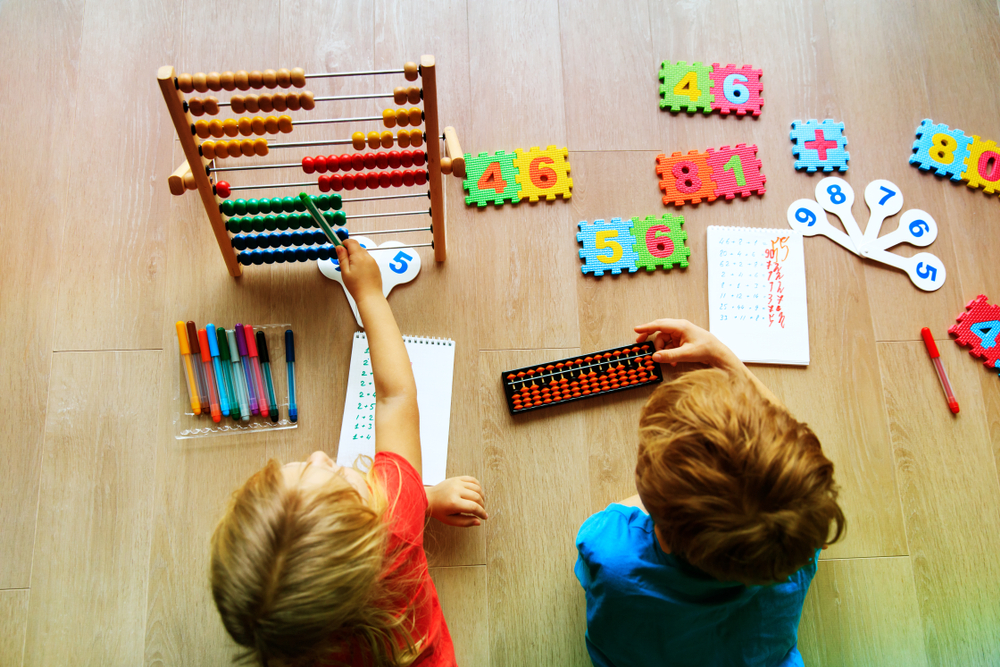Money recognition Coins Worksheets for Ages 5-9
5 filtered results
-
From - To
Discover an array of engaging "Money Recognition Coins Worksheets" designed for children aged 5-9! These vibrant and interactive printables make learning about pennies, nickels, dimes, and quarters fun and easy. Perfect for building essential math skills and financial literacy, our worksheets feature exciting activities like matching games, fill-in-the-blanks, and coloring exercises. Kids will love the playful themes and parents will appreciate the structured, age-appropriate content. Ideal for classrooms or at-home practice, these resources help young learners develop confidence in handling money, recognizing coin values, and making simple transactions. Give your child a head start in money management today!
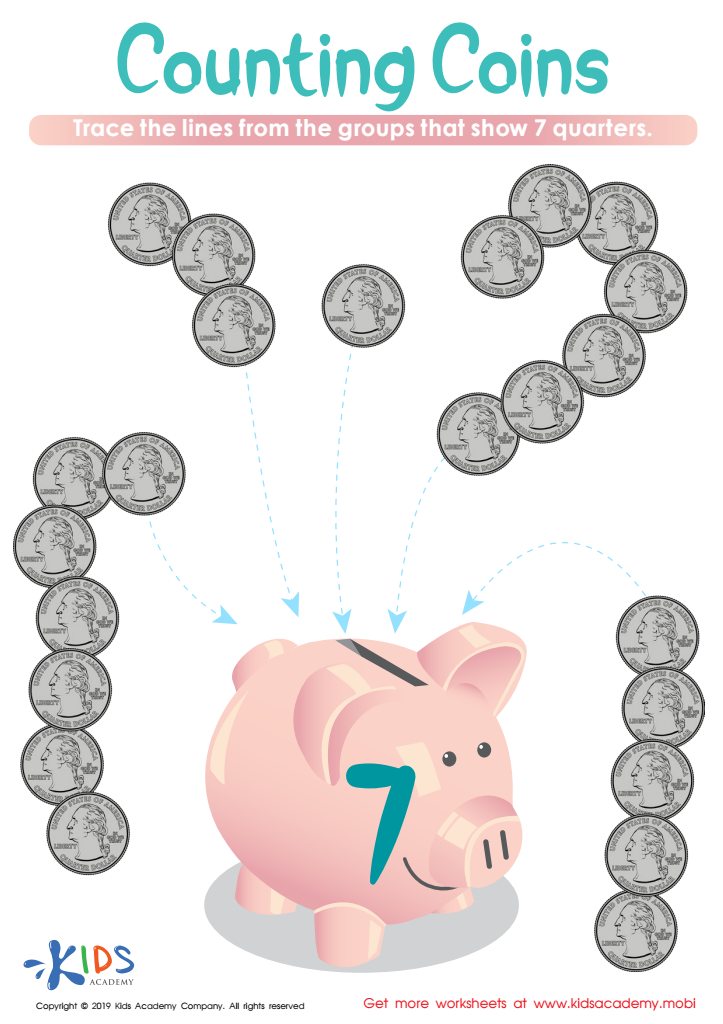

Counting Coins Worksheet


How Many Coins Money Worksheet
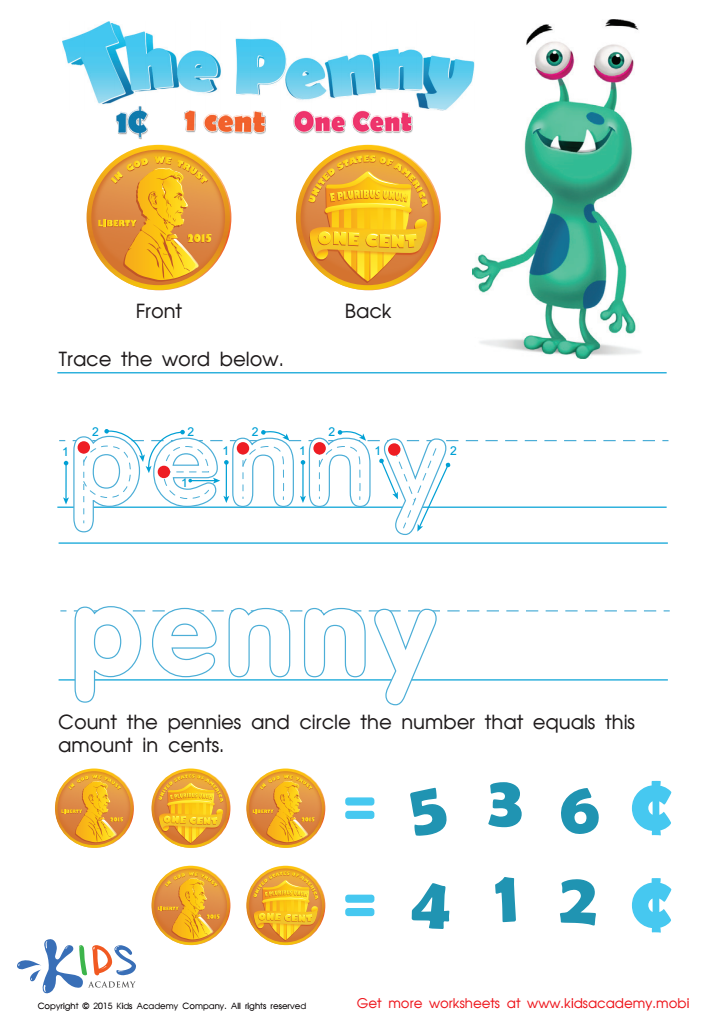

One Cent or the Penny Money Worksheet
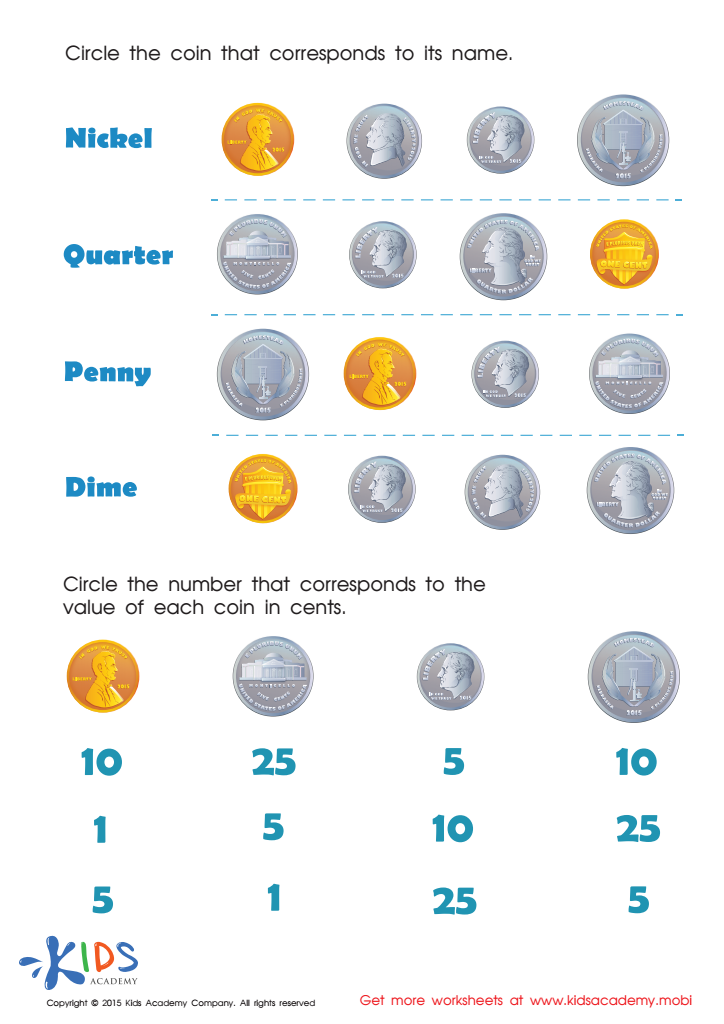

Coin Names and Values Money Worksheet
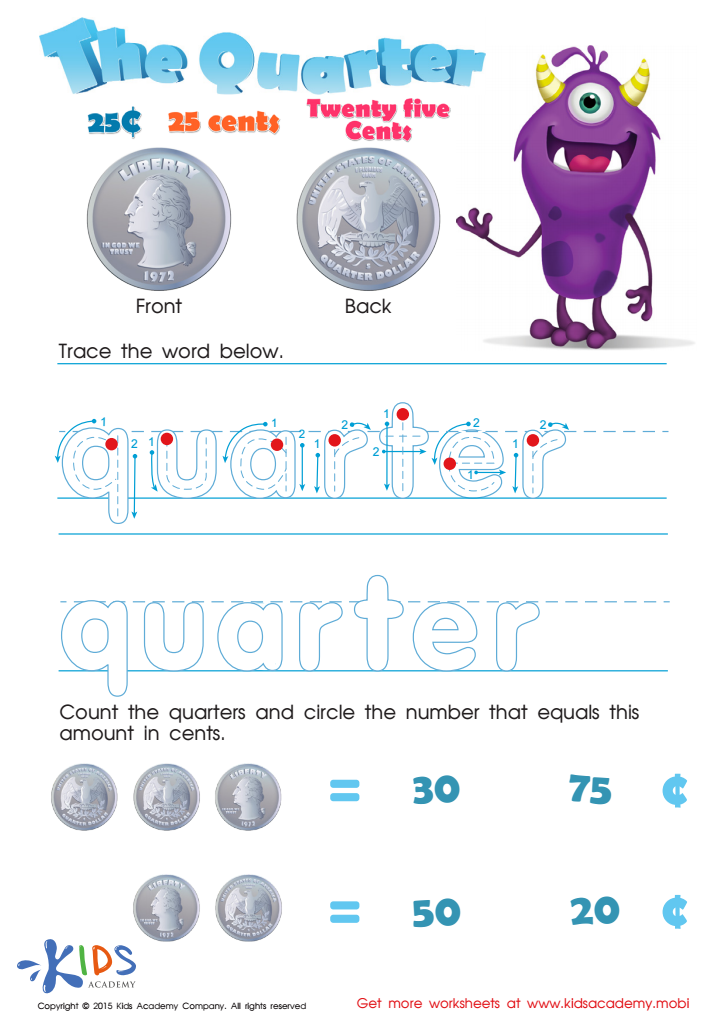

Twenty Five Cents or the Quarter Money Worksheet
Teaching money recognition, especially coins, to children ages 5-9 is essential for several reasons. First, it lays the foundation for financial literacy, an essential life skill. By learning to identify and differentiate values of coins, children begin to understand the concept of money and its role in everyday transactions.
Money recognition helps in developing math skills too. Counting coins and adding their values enhances numerical proficiency, including basic arithmetic operations like addition, subtraction, multiplication, and division. These actions reinforce math skills learned in class, making lessons more concrete and practical.
Cognitively, sorting coins and discerning their different sizes, shapes, and colors engage children’s problem-solving and critical thinking skills. Recognizing coins also encourages attentive observation and detail-oriented thinking.
Money recognition teaches children responsibility, as they start to grasp the concept of earning, saving, and spending. These lessons contribute to their overall understanding of economics and the value of financial management from a young age.
Lastly, coin recognition can be fun and engaging through hands-on activities, games, and play. By incorporating learning into daily life or interactive exercises, parents and teachers can make the process enjoyable and memorable, setting children up for further financial education and responsibility.

 Assign to My Students
Assign to My Students







